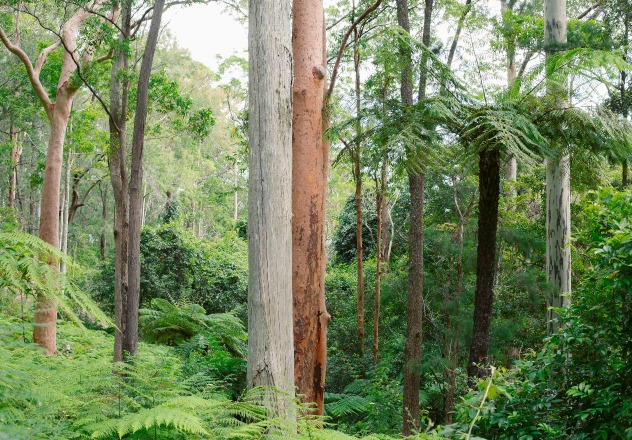Situated less than three hours north of Sydney, the new sanctuary protects 3,970 hectares of native forest in the Hunter region of New South Wales – lush habitat for the Endangered Koala and many forest-dwelling species that do not currently occur within AWC’s network of sanctuaries and partnership areas. Located on the Traditional Lands of the Worimi Nation, Gorton Forest Sanctuary is a working title and AWC is seeking to consult with the Local Aboriginal Land Council on an appropriate name.


The new sanctuary is located about 12 kilometres from Stroud on the Mid North Coast of NSW. AWC manages the sanctuary as part of a conservation agreement with philanthropists and generous long-time AWC supporters Andrew and Jane Clifford. The sanctuary protects 3,970 hectares of native forest and rich, dense rainforest gullies. These habitats protect a diverse range of threatened and declining species, giving the sanctuary significant conservation value. The sanctuary is located in an area recognised by the NSW Government as being of regional Koala significance and is expected to provide a major contribution towards the conservation of the iconic marsupial.
Located in a temperate zone with mild winters and warm summers, reaching an average temperature in the warmer months of between 27 and 28°C. The hottest temperature ever recorded was 46°C in January 2020, whilst the coldest temperature was -1.5°C in August 1994. The rainfall in this area is highly variable with summer dominance. The long-term annual average rainfall is approximately 1,100–1,300 millimetres.
The new sanctuary protects two primary vegetation communities typical of the region, wet and dry sclerophyll forests. The dominant tree species on the property are Sydney Blue Gum (Eucalyptus saligna), Tallowwood (Eucalyptus microcorys), White Mahogany (Eucalyptus acmenoides), Grey Gum (Eucalyptus propinqua), Spotted Gum (Corymbia maculata), Grey Ironbark (Eucalyptus paniculata), and Turpentine (Syncarpia glomulifera).
The previous owner’s family purchased the property in 1942 from the Australian Agricultural Company (which founded the town of Stroud in 1826). Small areas of the sanctuary have been impacted by historical logging practices. Between 2004 and 2019, about two-thirds of the property was harvested for sawlogs (mainly high-value girders and poles) and some pulpwood. There is a dam on the sanctuary and the major creeks appear to hold water year-round, at least in the large pools.
From analysis of previous ecological surveys, historical records, and publicly available data, AWC scientists estimate that the sanctuary likely supports more than 100 vertebrate species, of which 12 are listed as threatened. These threatened species include the Yellow-bellied Glider (Petaurus australis), Golden-tipped Bat (Phoniscus papuensis), Glossy Black-Cockatoo (Calyptorhynchus lathami) and the tiny Green-thighed Frog (Litoria brevipalmata).
The sanctuary provides habitat for many forest-dwelling species that do not currently occur with AWC’s network of sanctuaries and partnership areas, and opportunities exist to protect and enhance the populations of many species, including the Koala, an Endangered species in NSW.
AWC’s first priority for the sanctuary is to undertake biodiversity surveys to commence building a species inventory of the sanctuary. These data will inform the delivery of conservation land management actions and research, and will provide an important baseline against which we can measure ecological outcomes.
 Brad Leue/AWC
Brad Leue/AWC
Blackberry (Rubus fruticosus) – a Weed of National Significance (WoNS) ¬ is present on the sanctuary. The woody perennial shrub is native to Europe and grows in thickets to form a dense canopy that few plants can successfully compete with. Blackberry invades native bushland and provides habitat for rabbits and foxes. Lantana (Lantana camara) and fireweed (Senecio madagascariensis) – both WoNS – are also found on the sanctuary, particularly on lower slopes in wet and dry sclerophyll forested areas.
Low-density grazing by domestic cattle is ongoing, particularly in the western half of the property. Four introduced species have been recorded on the sanctuary and are a potential threat to native biodiversity: feral cats, foxes, rabbits and the common myna. Wild Dogs have also been recorded in the area.
Fire management and feral predator control help to protect glider populations on AWC sanctuaries and partnership sites.
Koalas inhabit eucalypt forests and woodlands in eastern Australia from north Queensland through to south-east South Australia.
Help us protect some of Australia’s most iconic species
Donate Now